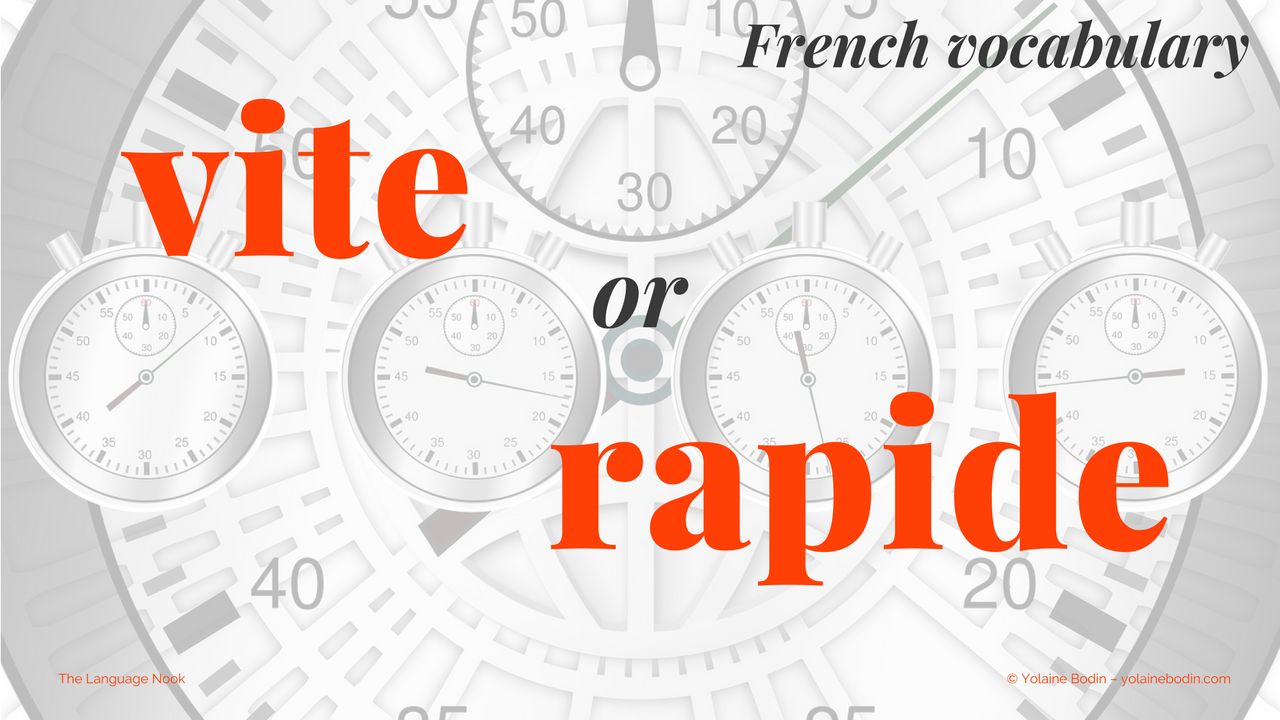Here is a question that is often asked in my French classes: when should you say vite and when should you use rapide?
You may think the difference between vite and rapide is confusing because of your mother tongue. Indeed, maybe you speak a language where there is only one word for both vite and rapide.
Look at these examples and you will quickly grasp the difference!
Vite is an adverb. You use it with a verb to modify the verb:
- Elles courent vite. (They run fast.)
- Il parle trop vite. (He speaks too fast.)
- Ne mange pas si vite ! (Don’t eat so fast!)
Rapide is an adjective. You use it to describe a noun or a pronoun.
- Le guépard est l’animal le plus rapide. (The cheetah is the fastest animal.)
- J’ai trouvé une recette rapide sur Internet. (I’ve found a quick recipe on the web.)
- Elle voudrait une voiture rapide. (She’d like a fast car.)
See how they are both used here:
- Le TGV est un train rapide. Il roule vite. (The TGV is a fast train. It goes fast.)
Let’s look at this more closely:
Le TGV est un train rapide. → rapide describes the train, it is an adjective.
Il roule vite. → vite describes the verb, the way the train goes, it is an adverb.
Remember! You can also say rapidement instead of vite.
The opposite of vite is lentement. The opposite of rapide is lent.
Rapide is spelt in the same way in the masculine and the feminine forms: un train rapide, une voiture rapide.
There you are! You now know when to use vite and rapide. Congratulations! 🙂





0 Comments